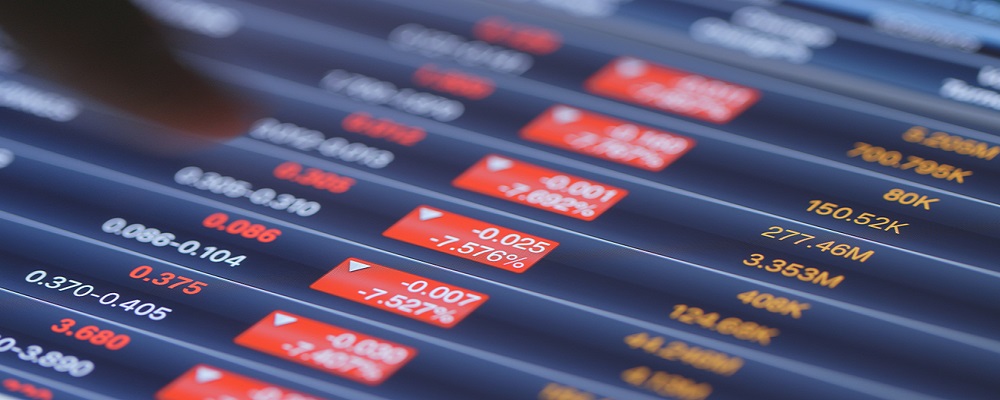Something that’s gotten me in trouble before is the urge to take the opposite side of any argument from whoever I’m talking to.
Or even the general public, which is that much more fun for me.
On top of that, I’m a natural skeptic. To believe something to really be true, I need to have a bunch of facts to back it up.
And right now, one of the biggest topics out there in the world of finance is the impending crash we’re apparently about to see.
Everywhere you look, someone else is calling for it. The October correction was perfect fodder for analysts from all over the place to come out and explain why we’re due for a crash.
Most of them cite things like interest rates, trade wars or debt. But from what I’ve heard, it seems like a lot of impressive, undeniable facts about our economy are being overlooked.
So I’ll gladly take the opposite viewpoint that we’ll not only not see a recession, but we’ll keep growing.
Productivity Is Soaring
The first indicator that means we’re not done with this growth yet is the level of productivity in America.
If productivity is high, that means the demand for employment is high. It also means there’s demand for more things, which means that more money is being spent and businesses are healthier.
The ISM Non-Manufacturing Purchasing Managers Index (PMI) measures business conditions over 62 industries in the United States.
These industries are all within the nonmanufacturing, or services sector, which makes up about 80% of the U.S. economy.
The index is based on a monthly survey sent out to over 400 executives, and it produces an overall score based on their level of optimism. A score over 50 is positive, and means that the economy is expanding.
So far in 2018, we’ve had arguably the best year ever since the PMI was created in 1997.
Not only has the score been over 50 every single month, it’s actually been over 60 for the past two months.
That’s never happened before.
And not only has the score never been over 60 for two straight months, it’s never even hit 60 twice in the same year.
The Health of the Global Economy
An alternative way to get a gauge on productivity is to simply read what executives are saying directly.
This is most easily done during earnings season. There are some companies who, for good reason, have more sway when they speak out about the economy and their views on it.
Caterpillar is one such company.
It’s actually used as a gauge on the health of the global economy. That’s because it makes equipment for just about every big job on Earth.
Just as extensive as Caterpillar’s product list is its customer outreach: The company made $28.4 billion from international sales over the past year.
So what is Caterpillar saying about its business right now, in the midst of panic? Here are three direct quotes from its quarterly earnings call on October 23:
“In summary, we feel good about the fundamentals of many of our end markets despite the presence of geopolitical risks and global trade tensions.”
“Based on everything we see today, we expect our business to continue to improve in 2019.”
“There’s a lot of different scenarios, of course, forecasting what’s going to happen in China. Based on everything that we see, we believe that the China market will continue to be healthy.”
I included the one about China specifically because that’s Caterpillar’s biggest market outside the U.S., and China’s economy has a big effect on the rest of the world.
But overall, Caterpillar sounds positive about the future. And the last thing it wants to do is mislead its investors. If things were bad, Caterpillar would be honest like they were during the big slowdown in 2007.
This was also a quarter when Caterpillar reported 18% growth in sales and 63% growth in profits over the past year.
For such a big company, that’s a ridiculous amount of growth. Yet the next day, the stock fell by over 7%.
A lot of people see that drop and assume Caterpillar had a horrible quarter. But if you read into it, you’d be pleasantly surprised.
The Many Benefits of 3D Printing
There’s also a “new wave” coming to productivity: 3D printing.
This is an industry that’s projected to grow 415% over the next seven years to a total of $44.4 billion.
With 3D printing, you can draw up a prototype of something and make it a tangible object in the same day.
This is a completely new concept. For example, the current process of creating a steel object might involve cutting the steel, welding, grinding, drilling, sanding and coating. But with 3D printing, all you have to do is tell the printer what to make, and it’s all done in that one step.
And that’s all while using the same amount of power as a laptop. So not only does it save money on materials and manufacturing costs, you’ll also save on electricity.
Another benefit of 3D printing is customization. You can tell the printer to make whatever you want.
So rather than making a part in 10 different sizes, and requiring special, unique equipment for each one, you can make one of each all with the same printer. No other materials are required!
A technology with cost and customization benefits like these can be widely used across any industry to improve the pace of making anything.
The Numbers Backup Our Economic Boom
Before any stock market crash, we’ll start to see a big drop off in production. For example, PMI had been in an overall downtrend for five years when the 2008 crash happened.
Of course, 2008 was the sharpest point of that downtrend. But right now we’re nowhere near the sort of weakness that we saw back then.
So for productivity, the current environment is extremely optimistic, and the numbers are there to back it up.
With a stronger-than-ever PMI, good results from Caterpillar and 3D printing really beginning to emerge, production in the United States is promising for the overall economy.
Regards,

Ian Dyer
Editor, Rapid Profit Trader










